Air fryers are hailed as culinary game-changers. They promise to deliver the mouthwatering crunch of deep-fried favorites with a fraction of the oil and a heap of health benefits. But, as with any kitchen innovation, it's essential to explore both sides of the frying pan before deciding if it's the right tool for your kitchen repertoire.
In this blog post, we'll explore the pros and cons of air fryers.
What Is An Air Fryer?
An air fryer is a modern and space-saving kitchen device like a convection oven that uses hot air circulation to prepare meals. It mimics the crispy results of traditional deep frying but with significantly less oil, making it a versatile and health-conscious addition to any kitchen.
How Does An Air Fryer Work?
An air fryer is an ingenious appliance that harnesses the power of hot air and rapid circulation to achieve the same crispy exterior results as traditional frying methods but with a fraction of the cooking oil.
The process begins with a robust heating element positioned at the upper part of the air fryer. When you set the desired cooking temperature, this element springs into action, rapidly heating the air inside the cooking chamber. The real magic happens with the help of a high-speed fan. As the air inside the air fryer heats up, this fan kicks in, creating a cyclone-like airflow. This forced convection ensures that the hot air circulates around the food evenly, enveloping it from all angles. The combination of dehydration and the Maillard reaction results in the coveted golden-brown exterior and the satisfying crunch that makes fried dishes irresistible.
Air Fryer Advantages
Lower Fat Cooking And Can Promote Weight Loss
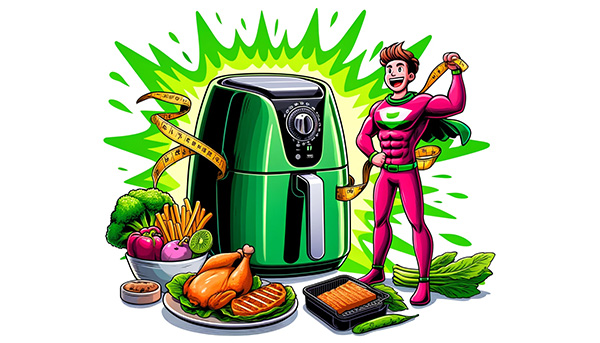
Air frying is a healthier alternative to conventional deep frying, as it can reduce calories by 70-80% and fat intake by up to 75%. For individuals who enjoy deep-fried foods regularly but struggle to limit their fatty food intake, using an air fryer can aid in weight loss efforts by reducing the amount of fat and calories consumed.
Easy To Clean
Cleaning an air fryer is super easy. Air frying usually doesn't result in much mess unless you're cooking foods that tend to produce grease or oil, such as chicken wings or steak. When searching for air fryers, look for ones with baskets that are easy to clean. Disassembling the basket and washing the parts with soap and water should be easy. Sometimes, certain parts are even dishwasher-safe for an effortless cleaning experience.
Safer To Use

Compared to traditional cooking methods such as deep frying or using hot plates, air fryers offer a safer option. While air fryers get hot during use, there is no risk of splashing or spilling like with hot oil in a deep fryer or stovetop.
Energy Efficiency
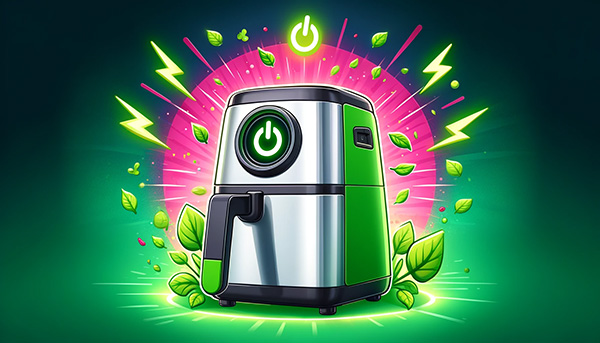
An air fryer consumes less energy than most electric conventional ovens, making it an energy-efficient choice that can help you save money on your electricity bill. In addition to cost savings, air fryers also positively impact the environment by reducing carbon emissions.
Versatility
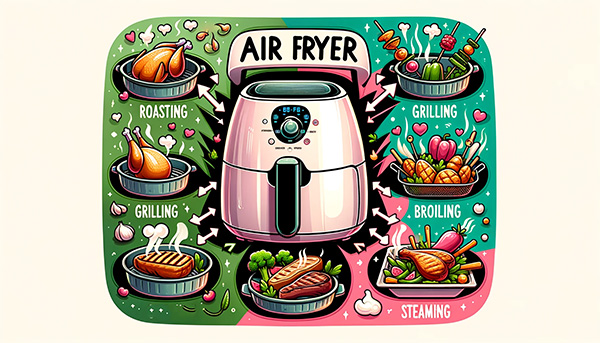
Air fryers offer a wide range of functions beyond just air frying. With the ability to roast, grill, broil, steam, and heat food, many air fryers are versatile kitchen appliances that can handle various cooking needs.
Furthermore, the air fryer is versatile, allowing it to cook a wide range of foods, from frozen French fries and churros to crispy chicken tenders and more.
Convenient To Use

Air fryers are incredibly convenient to use as they require little to no preheating time. While some models may need a quick 60 seconds to preheat, most air fryers can start cooking almost immediately. Air frying is a remarkably efficient cooking method that saves you time in the kitchen and is much faster than traditional cooking methods like baking or grilling.
Reduce The Risk Of Toxic Acrylamide Formation
Compared to traditional frying methods, air frying significantly reduces the risk of acrylamide formation in food by about 90%. Acrylamide is a chemical that forms in some foods when cooked at high temperatures and may pose health risks.
Faster Cooking
Air fryers are known for getting food cooked fast. The high-speed hot air circulation inside the cooking chamber ensures food is cooked quickly and evenly. This feature can be a lifesaver on busy days when you must quickly put dinner on the table.
Less Mess
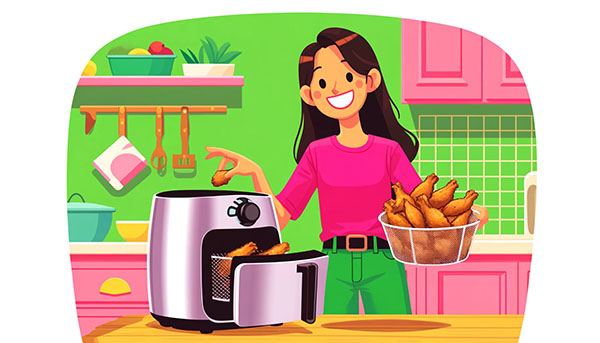
Traditional frying often splatters hot oil, leaving a messy stovetop and kitchen. Air fryers solve this problem by encapsulating the cooking process within the appliance. Additionally, many air fryer parts can be safely cleaned in a dishwasher, simplifying the cleanup process.
No Preheating Required
Unlike a conventional oven that requires preheating, air fryers heat up quickly, so you can start cooking your meals almost instantly. This feature can save you valuable time when you're in a hurry.
Even Cooking
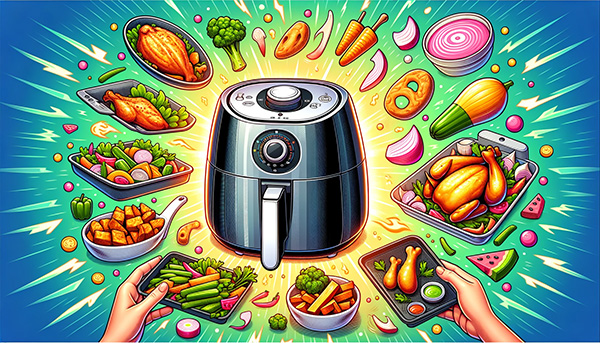
Air fryers typically provide consistent heat distribution throughout the cooking chamber, ensuring that your food cooks evenly. Thus, you need not worry about certain parts of your dish being overcooked while others remain undercooked.
Reduced Odor And Smoke

Cooking certain foods, especially those with strong odors like fish or deep-fried items, can often leave your kitchen and home smelling less than pleasant. Air fryers significantly reduce this issue. Since they use hot air circulation rather than submerging food in oil, there's less opportunity for cooking odors to permeate your living space. This means you can enjoy your favorite meals without worrying about lingering, unwanted odors that can be hard to eliminate.
Affordability
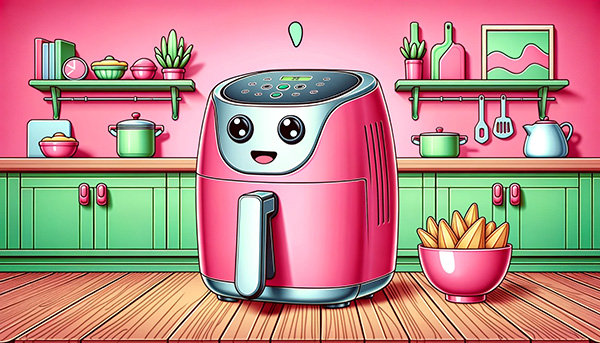
Air fryers are generally more budget-friendly than other kitchen appliances like convection ovens or high-end stove top ranges with built-in air frying capabilities. This affordability means that many consumers can enjoy the benefits of air frying without making a substantial financial investment.
Air Fryer Cons
Food Texture

While air fryers can get food crispy, they might not perfectly replicate the precise texture of deep-fried food. Some dishes may turn out drier or less tender than when prepared with traditional frying methods.
Air fryers generally have a limited cooking capacity compared to traditional ovens, meaning you may need to cook food in batches when cooking for a larger group of people. However, some models have a larger cooking capacity to accommodate more food. So, if you have a big family or like to entertain guests, looking for an air fryer with a larger capacity to avoid cooking multiple batches is important.
Higher Risk Of Burning Food And Build Up Potential Carcinogens
Air fryers are known for cooking food at a high temperature that typically ranges from 300-400 degrees F. Monitoring your food during cooking is crucial to prevent it from overcooking or burning. One common issue when cooking in an air fryer is the formation of a blackened crust on the outside of your air-fried food. This crust, called acrylamide, may have harmful effects, such as potentially causing cancer. Therefore, it's important to be mindful of this and remove or discard any air-fried foods with a heavy black crust.
Exploring the possibilities of cooking with an air fryer involves trying various foods and cooking modes. Reading the instruction booklet before embarking on your culinary experiments is essential. Additionally, it's advisable to stick to the recommended air fryer recipes to ensure successful results.
Lack Of Traditional Cooking Techniques
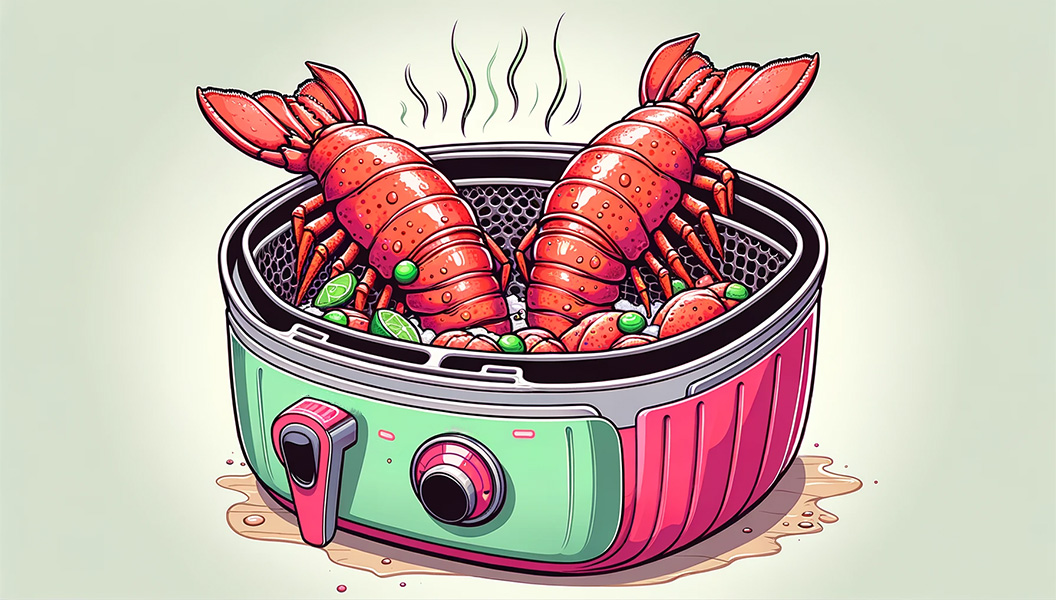
Air fryers aren't suited for all cooking techniques. There may be better choices for tasks like slow cooking, baking large items, or using specific traditional cooking methods.
Uneven Cooking
Despite the air fryer promise of even cooking, air fryers may not always deliver perfectly uniform results. Some foods might be more exposed to the circulating air, leading to uneven browning. To counter this, you often pause cooking to shake or flip the food.
Noise
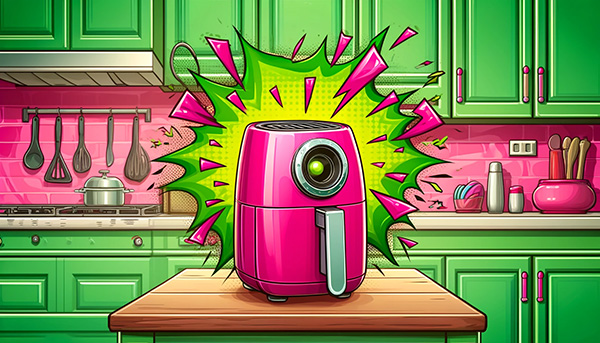
Air fryers can be noisy due to the fan and heating element. While the noise level varies between models, it's something to consider if you prefer a quiet kitchen environment, especially during longer cooking sessions.
Counter Space
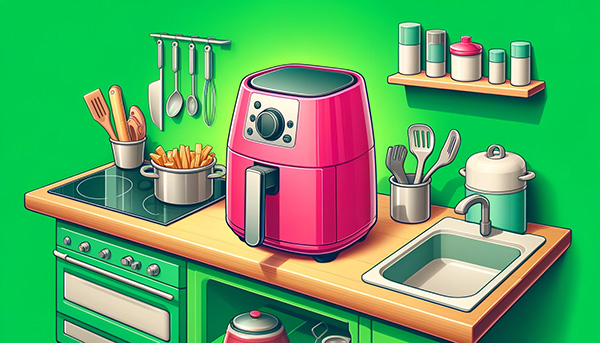
Although smaller than ovens, air fryers still require counter space. If your kitchen is already tight on space, locating an appropriate spot for your air fryer can pose quite a challenge.
Health Claims
Air fryers have become increasingly popular because they can cook crispy and flavorsome dishes using substantially less oil than conventional deep-fat frying techniques. However, it's essential to understand that air fryer-cooked food may not always be inherently healthy.
While air frying reduces the calorie content of healthier meals compared to deep frying, it doesn't make high-calorie, traditional fried foods low-calorie. If you're preparing calorie-dense foods, portion control remains important for maintaining a balanced diet.
The healthiness of a meal largely depends on the ingredients used. While air frying reduces the need for excessive oil, it doesn't alter the nutritional content of the food itself. The final dish may still lack nutritional value if you cook unhealthy ingredients, such as processed foods or those high in saturated fats and sugars.
Air Fryer Material
Like many kitchen appliances, air fryers can pose safety concerns related to their materials and coatings. Many air fryer baskets and trays are equipped with non-stick coatings designed to prevent food from adhering to the surface while cooking. These coatings are often crafted from polytetrafluoroethylene (PTFE), more commonly known as Teflon.
Teflon coatings on an air fryer basket and tray can release toxic fumes, particularly when exposed to high temperatures. Inhaling these fumes can pose health risks, and ingesting non-stick coating particles can also pose health risks.
To ensure your and your family's safety while choosing a non-toxic air fryer, look for models that do not contain PTFE, lead, cadmium, or ceramic coatings.
No Wet Battered Food

While air fryers are excellent for achieving crispy textures with minimal oil, they are better suited for dry or lightly coated foods. To enjoy wet battered dishes like fish and chips, it's advisable to use more traditional frying methods like deep frying or pan frying, which can accommodate the wet batter and provide consistent results.
Wet batter, which typically consists of a liquid (such as water, milk, or egg) mixed with flour or breadcrumbs, tends to have difficulty adhering to the cooking basket or tray in an air fryer. The forced air circulation can blow away or wash off the wet batter during cooking. Wet battered food can release excess moisture during cooking. This can accumulate in the bottom of the air fryer basket or tray, potentially causing smoking, burning, or creating a challenging mess to clean.
Hard To Clean
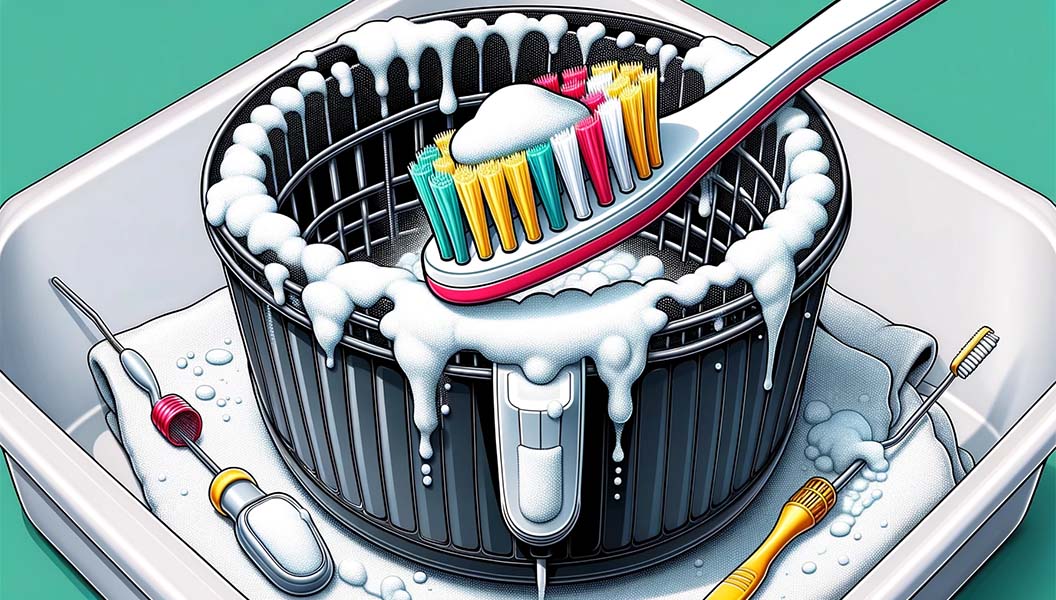
An air fryer typically consists of multiple components—the cooking basket or tray, the drip tray, and sometimes the heating element or fan cover. These pieces can be disassembled for cleaning, but their intricate design can make the process more involved.
While most air fryers feature a non-stick coating, which is a perk when it comes to cooking, it can be a bit of a challenge when cleaning. Scrubbing or employing abrasive materials can harm the non-stick surface, so handling it carefully is crucial.
Because air fryers use high heat and forced air circulation, some foods may release oils, juices, or small particles that can accumulate at the bottom of the cooking chamber. This residue can be stubborn and difficult to remove from the air fryer.
Learning Curve
Air fryers cook differently from traditional ovens or stovetops. You must experiment with temperature settings and cooking times to achieve the desired results for various dishes. Achieving the perfect result may require a few attempts.
Mastering air frying often requires experimenting and learning from your cooking experiences. Trying out different foods, techniques, and recipes will help you become proficient with this appliance.

